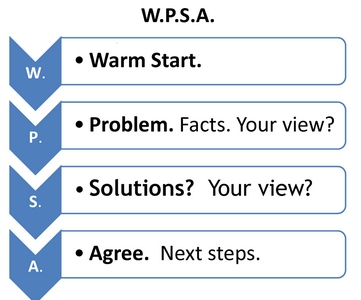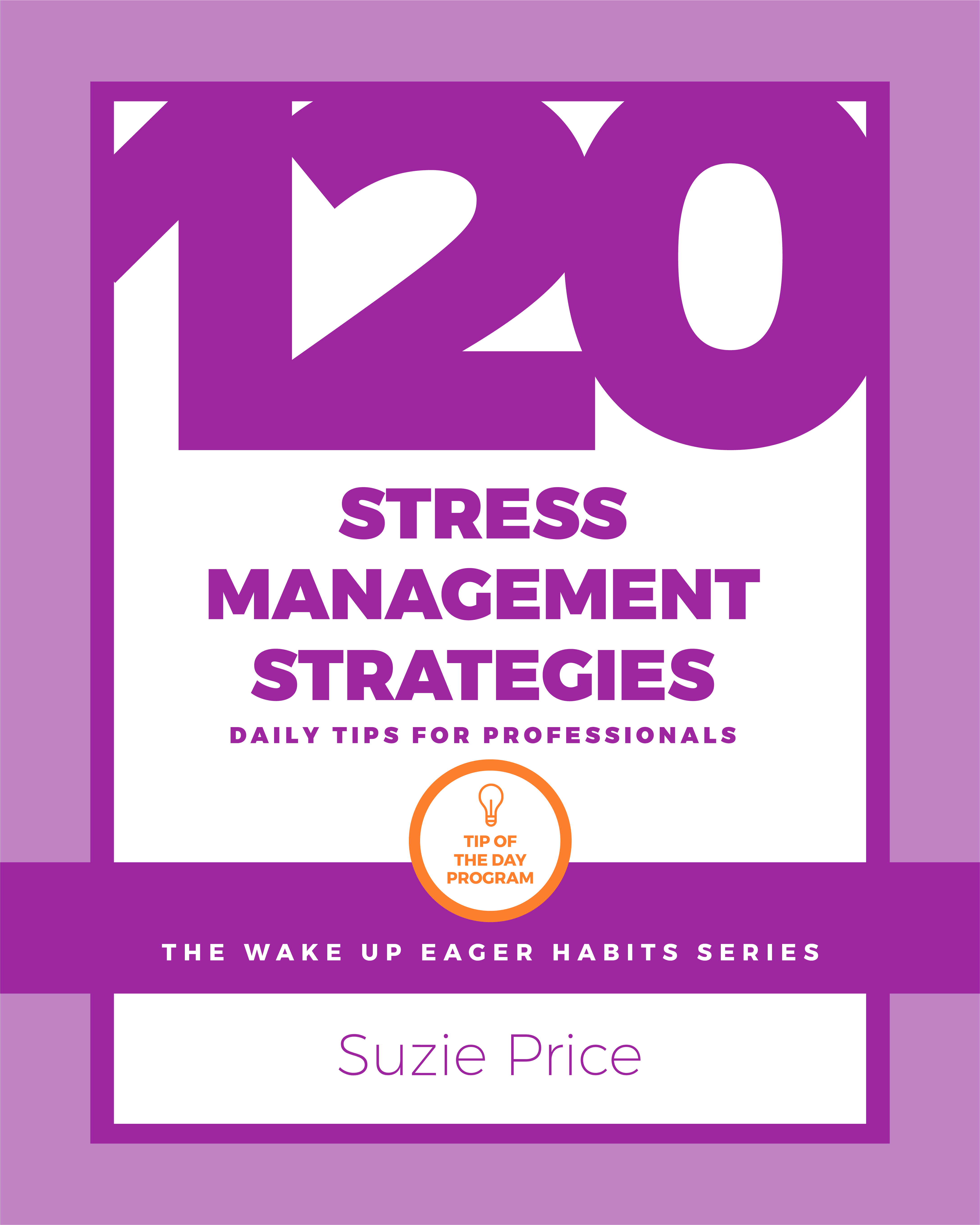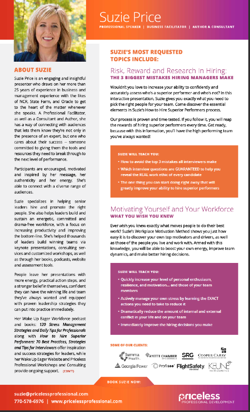The Know How You Need & the Tools to Get You There... Get Certified >

How to Give Feedback and Not Wreck Relationships: A Four Step Process
Page 1, 2

On page 1 of this How to Give Feedback article I shared how I learned what not to do from my former boss Brutus. (On Page 1, you can also share your wisdom and give Brutus some advice.)
Getting good at addressing work habit issues (like messy desks, too much personal time, being late) and knowing how to effectively address performance issues (like missed deadlines, low production, inadequate work product) can be tricky, but learning how to be effective with these conversations is important.
The typical manager can spend up to two days a week managing poor workplace work habits, low performance and team conflict. Knowing how to give feedback is important skill set for all leaders, and that's why this is one of the classes we teach in our Essential Leadership Performance Tools workshops.
Address Problems Quickly by Focusing on Behaviors and Facts:
The ability to quickly, specifically and factually
discuss each team member’s performance.
How to Give Feedback - Four Steps
I am so glad I get to teach this process because what you teach, you learn. This skill is a skill I have to practice as it doesn't come naturally to me.
Using this How to Give Feedback Four Step process helps me (and will help you) stay factual, be direct (without being too harsh), and effectively solve performance/work habit issues.
Here's a visual of the acronym of the four steps;

The acronym for quick recall is: W.P.S.A.
How to Give Feedback - Four Step - Break Down:
The First How to Give Feedback Step is:
W - Warm Start
This is to begin the conversation
with a calm and open demeanor.
You may be thinking, I'm about to fire this person or this person’s been late 10 times! Why in the world would I 'Start Warm?' Good question. The degree of warmth you share will definitely depend on the situation. If someone’s really crossed the line, violating numerous work policies, your warm open may just be a calm demeanor, direct eye contact and firm handshake.
But if this is a solid employee who’s gotten into a bad habit of being late or talking on her cell phone too much, well in that situation, you will want to open with positive comments about this person’s work history, accomplishments and more.
You’ll definitely want to use your judgment on this – keep in mind that you want to build trust and commitment, not destroy it - no matter the situation. Opening with a warm start, moves the conversation in a more positive future-focused, trust-building way.
IF BRUTUS HAD USED THIS STEP:
At the next team meeting, or on a day when he was rested and calm,
he could start the feedback session with his team this way,
"I have something very important to talk to you about."
"First,
I need to tell you that I think you are all doing a really good job.
This team is one of the best Human Resource teams I have ever worked
with."
"I'd also like to applaud all of your efforts in the
recent roll-out of the new recruiting process.
You all helped us make
the change without any problems. Good work!!"
The Second How to Give Feedback Step is:
P – Problem.
This is where you state the problem.
Then you ask the other person, their view.
In this Step you want to state the problem in a factual and specific manner, sharing only what you’ve seen and heard. Years ago TV character Jack Weber, in the old cop show Dragnet, use to say to anyone he was interviewing, “Just the facts, ma’am. Just the facts.” Staying fact-based is crucial. Use the litmus test discussed in Improvement Step One found here, in this article, about feedback.
IF BRUTUS HAD USED THE SECOND STEP, HERE'S
WHAT HE COULD HAVE SAID:
"You ARE a top-notch team, so I was a little surprised
when the entire department
was not in the office last week.
You all arrived together, 30 minutes
past the lunch hour."
"When you all were not here, three
different employees and two
managers showed up at my door, looking for each
of you.
I was embarrassed because I didn't know where you all were."
"I
didn't like the negative impression it left on the department.
Since we
are the enforcer of many of rules here, it doesn't
look good when we ignore them. It sets the wrong example."
"Do you have some thoughts about this situation and my concerns? What's your view?"
The Third How to Give Feedback Step is:
S – Solutions.
Once the problem has been thoroughly discussed, and there’s been
some agreement about the facts, you now move to discussing solutions.

Before you share your solutions you start by asking the other person, “What ideas do you have?” You might ask - Why do you recommend that I ask the "trouble maker" to provide solutions? What if they offer daffy ideas? More good (and common) questions!
You ask the other person first because when you invite participation, people (if they have been heard and feel understood) tend to want to help solve the problem. It's amazing when it happens, but I promise you if you do these steps, and you listen aggressively, this person will begin helping craft a plan to solve the problem he or she created. When this happens – try to not jump on your desk and sing hallelujah, okay?
IF BRUTUS HAD USED THIS STEP-HERE'S
WHAT HE COULD HAVE SAID:
"I know how hard you all work, I see it every day!"
"But
team, I need you here in the department after lunch. On time.
This is
often our busiest time of the day, a prime time for visits
from
employees and managers who need our help."
"How do you think we can solve this problem in the future?
What do you recommend?"
The Fourth How to Give Feedback Step is:
A - Agreement.
This is where you confirm what actions
will be taken and you set a time and date for review.
This simple step gets skipped. If you skip this step – you’ve blown it.

If you do not confirm what you heard with what the other person heard – you do not have a commitment.
If you leave the meeting without a recap of the agreements, confirmed commitments and a planned follow up conversation – guess what happens? Nothing. Yea, nothing. Communication can be challenging. We hear about 70% of what someone says, and two days later, we only remember at most, half of that, around 35%.
What gets done is what gets measured and tracked. Make this a memorable conversation by scheduling a follow up meeting. You did all this work. Unless you do the Agreement step – this person will forget.
IF BRUTUS HAD USED THIS STEP-HERE'S
WHAT HE COULD HAVE SAID:
"Okay, we've come up with some good solutions together, good.
In the future, the team will plan off-site fun, after hours."
"And
if there are times when you do need to return late from lunch: one,
you'll inform me so I can be ready to step-in and properly direct
people,
and two, you'll leave one manager in the office."
"Do I have that right? Good. Okay, let's put this on
our team meeting agenda
for next month, on Tuesday, May 25. We'll
spend a few minutes checking-in to see if
these solutions are working
and if we need to make any changes, okay?"
That is W.P.S.A. - a four-step process for remembering how to give feedback without wrecking the relationship. If Brutus had used it with us on a regular basis, I wonder where I'd be today!
For more info on the two actions you can take that will help you use W.P.S.A. effectively, read this article.
Contact us for a complimentary coaching call.
LET'S TALK:
Contact us to schedule a Complimentary Consulting Call
or to ask questions about any of our Hiring,
Coaching, Training and Assessment services.




